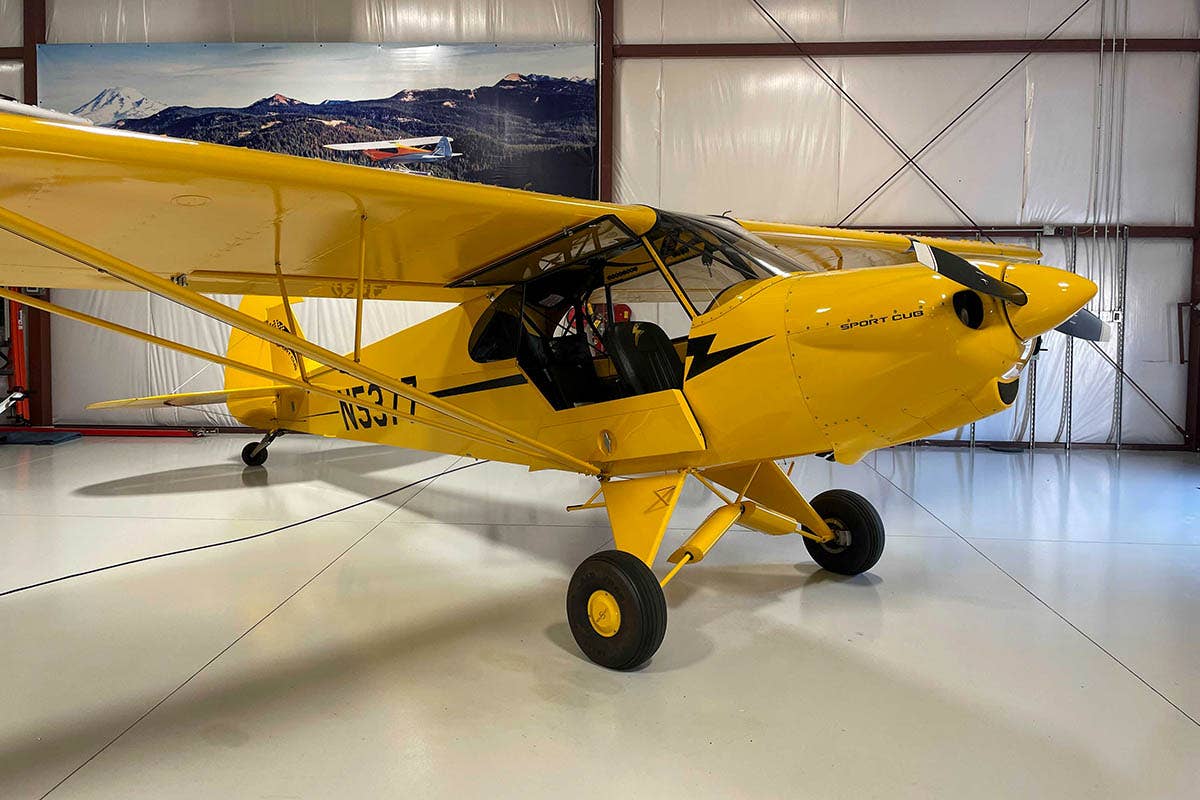LSAs: Perfect Aircraft for a Fly-In at Triple Tree Aerodrome
The versatility of light sport aircraft make them ideal for grass strips like that at Triple Tree.

The CubCrafters Carbon Cub SS is made from roughly 50 percent fewer parts than the Piper Super Cub from which it evolved. [Credit: Julie Boatman]
Maybe you've considered the light sport category of airplanes (LSAs) as a way to fill your home hangar as well as simplify your flying—or maybe you’re ready for a new kind of aviating altogether. With the Triple Tree Aerodrome as our inspiration for flying into the Greenville-Spartanburg area, we take a look at a trio of alternative aircraft well-suited to either landing on the grass, cruising the cityscape, or soaring with the hawks.
Grass: CubCrafters Carbon Cub SS
CubCrafters took an iconic design—the Piper Super Cub—and turned it upon its ear, so to speak, with an ongoing evolution of models that both fit the initial airplane’s backcountry purpose and take it into the modern age. The most quintessential of these designs is perhaps the Carbon Cub. While you can get one in a kit, you can also opt for the Carbon Cub SS, which is factory built under the light-sport umbrella.
Made from roughly 50 percent fewer parts than the original, the Carbon Cub SS weighs more than 300 pounds less than the Super Cub too—and that means more features (and payload) can be packed inside and stay within LSA rules. It will climb as fast as 2,100 fpm, and take off and land in distances less than 120 feet under ideal circumstances.
Depending on the model of engine up front, Carbon Cubs will cruise between 110 and 132 mph (or 95 to 114 knots). You’ve seen Carbon Cubs rip it up in STOL contests—they will make easy work of the grass at Triple Tree, or wherever your journey to the region takes you.
Modern: Flight Design F2
Another option in the light sport category, the carbon-fiber Flight Design F2 gives you the modern age both in aerodynamics and in the panel. With forgiving stall and slow flight characteristics, the F2 offers the pilot a sporty and friendly flying companion.
Powered by a 100 hp Rotax 912iS up front, driving a three-blade composite prop, the F2 easily makes a cruising speed of 115 kias. With an empty weight of 835 pounds, you have 485 pounds of fuel, people, and bags to put on board. At 7,500 feet msl, and dialing back to 55 percent power and 100 kias, range is a healthy 850 nm off of 34.3 gallons of fuel, according to the company.
Up front, the brains of the S-LSA F2 are in the dual Garmin G3X avionics suite, with the GTR 225 com radio, GTX 345 transponder, GMA 245 audio panel, and GFC 507 digital autopilot. A BRS airframe parachute system rounds out the list of safety features for a sweet ride that looks after its own.
Soaring: Pipistrel Sinus Flex
Want the ultimate in fun flying to put in your hangar? Pipistrel, with its long history of creating both airplanes and motorgliders, has created a new option for pilots who want to have it both ways, with the Sinus Flex LSA. The new model takes the Sinus motorglider—with its 30:1 glide ratio and up to 7.5 hours of endurance—and makes its wingtips interchangeable with the Virus cruiser. This knocks the wingspan down by 9 feet, and makes it easier to fit into the home hangar.
The Sinus uses the 80 hp Rotax 912 powerplant to get aloft, so you’re not dependent upon a towplane to reach your soaring grounds. Fuel tanks come standard at 16 gallons with a long-range option of 26 gallons—but when you find the right conditions, you can shut down the engine and pick up “free” lift from thermals or ridges.
This article was first published in the 2022 Southeast Adventure Guide of FLYING Magazine.

Sign-up for newsletters & special offers!
Get the latest FLYING stories & special offers delivered directly to your inbox






